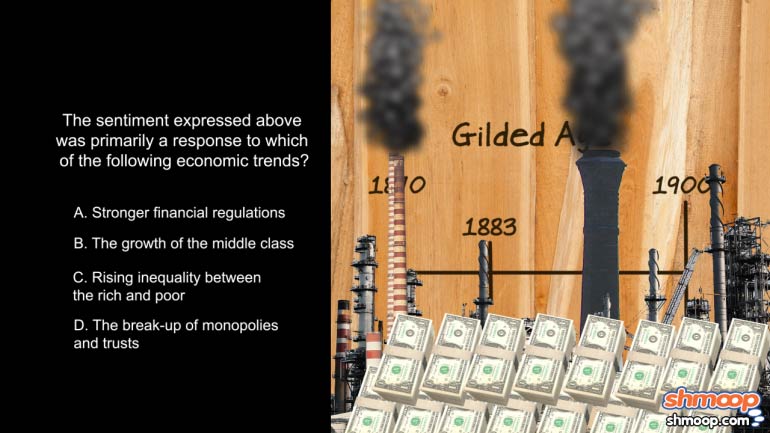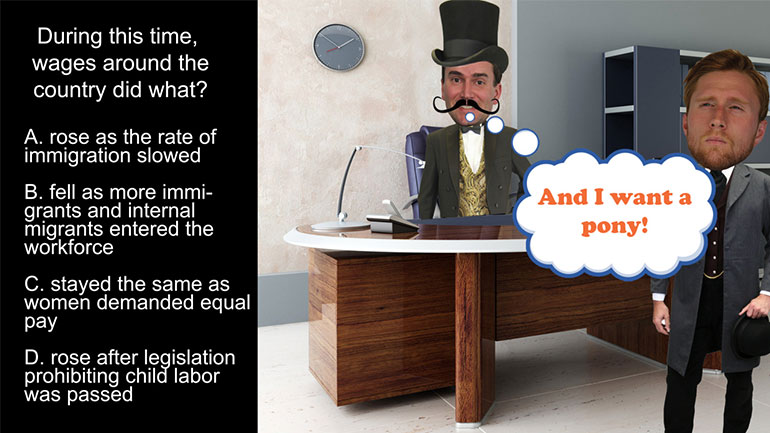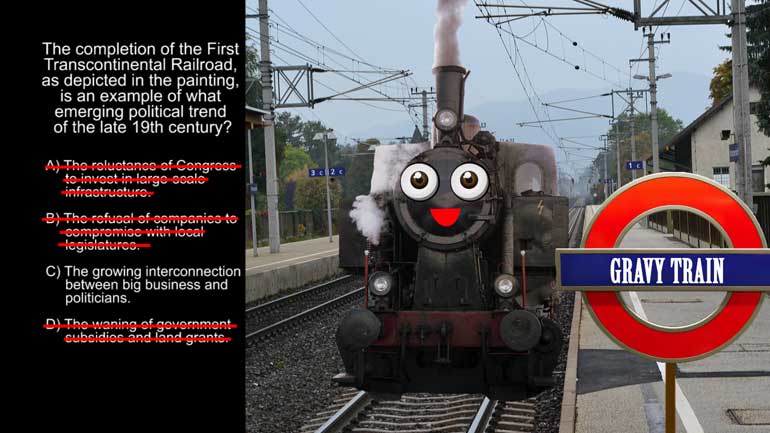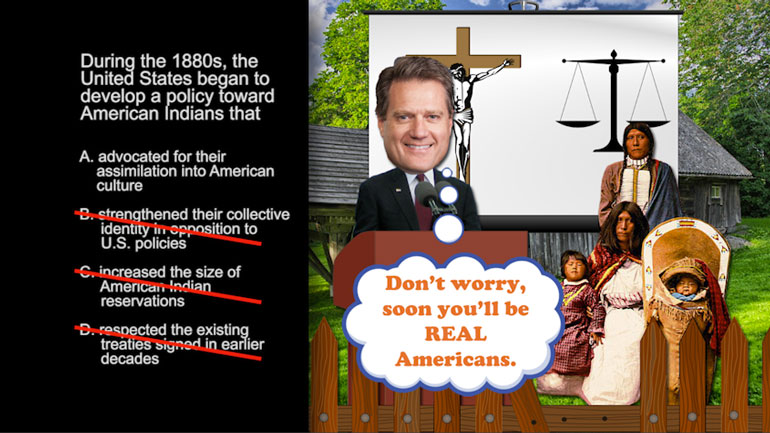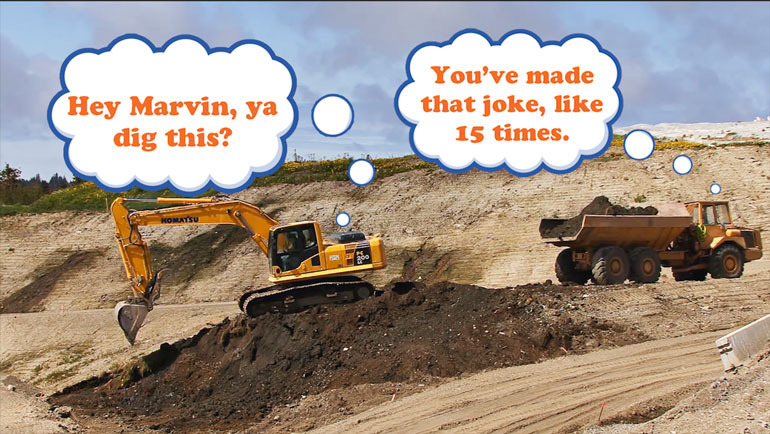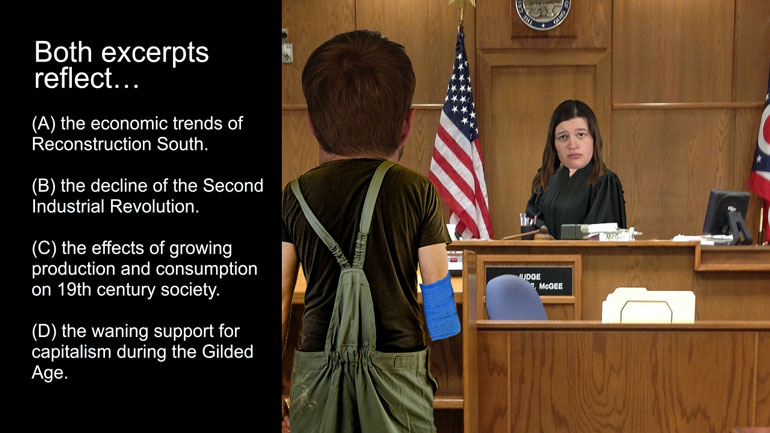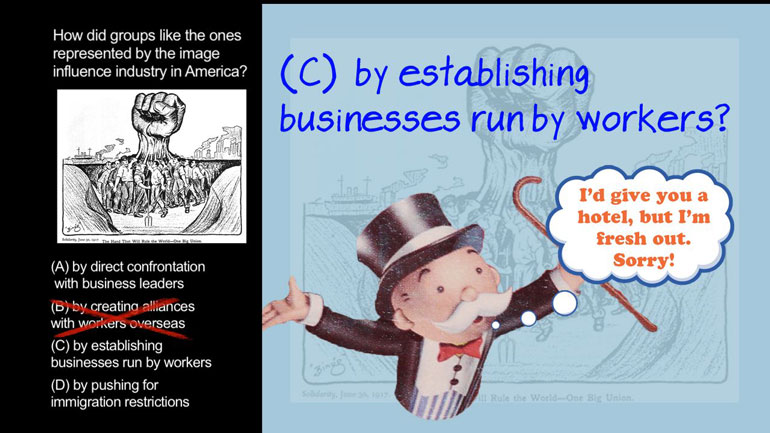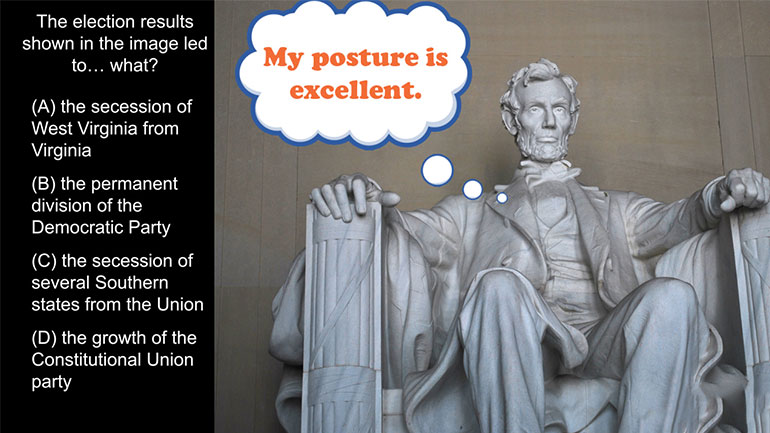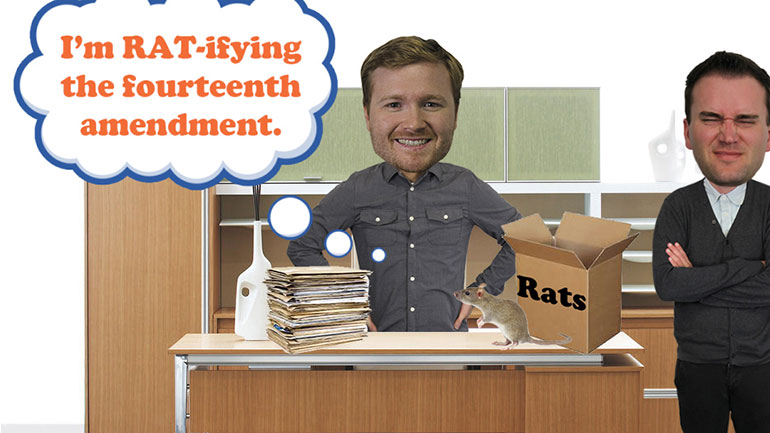ShmoopTube
Where Monty Python meets your 10th grade teacher.
Search Thousands of Shmoop Videos
Period 6: 1865-1898 Videos 11 videos
AP U.S. History 1.1 Period 6: 1865-1898. The sentiment expressed above was primarily a response to which of the following economic trends?
How did the wealthy justify their status and privilege? Other than the customary way of having large gold statues built in their likeness with sign...
AP U.S. History 1.3 Period 6: 1865-1898. Which of the following groups would be most likely to agree with the goals of the Populist Party?
AP U.S. History 3.1 Period 6: 1865-1898 7 Views
Share It!
Description:
AP U.S. History 3.1 Period 6: 1865-1898. Both excerpts reflect...what?
Transcript
- 00:04
Here's your shmoop du jour brought to you by consumption what is
- 00:08
Easter we're supposed to eat a pound of chocolate right it's not Easter oh well [Man eating easter bunnies]
- 00:14
whatever okay all right take a look at the following
- 00:16
passage we hear now on all sides the term robber barons applied to some of
- 00:21
the great capitalists...[mumbling]
Full Transcript
- 00:59
alright well here's an eighth question both excerpts reflect the what?
- 01:04
then here is potential answers all right
- 01:12
contrary to how it
- 01:13
sounds the Gilded Age was actually in the late nineteenth century not when [King Midas appears with lots of gold bars]
- 01:18
King Midas was around clever nickname cred goes to Mark Twain there seriously
- 01:23
is really clever name the word gilded refers to an object that is covered in a
- 01:28
thin layer of gold but made of something else underneath so the Gilded Age is a
- 01:34
critical term calling out how the appearance of plentiful wealth covered [Woman wearing dress and poor man appear]
- 01:38
up a poorly treated and well poor working class yeah totally it was clever
- 01:44
alright so the unfortunate reality of the situation was that members of the
- 01:49
working class could expect to work long hours for very little pay a lot of them [Construction workers appear]
- 01:53
even sent their children to work to make ends meet factory work was often [Children working in a factory]
- 01:57
dangerous and factory owners that weren't held accountable for unsafe work
- 02:01
environment workers who were injured or killed on the job had almost no chance
- 02:07
of legal recourse at courts usually held that the workers responsible for being [Worker appears in court before a judge]
- 02:12
negligent that's the definition of unfair ladies and gentlemen now
- 02:16
seriously grab a dictionary that exact sentence Rilla maybe okay we'll take a [Man holding a dictionary]
- 02:22
look at answered be Twain may have scathingly called it the Gilded Age but
- 02:26
despite its shortcomings it was a very productive period the Second Industrial [Cogs turning]
- 02:31
Revolution was a time of rapid economic growth and invention it just wasn't very
- 02:36
fun for the people who actually made that growth happen so we can repeat do [Man standing in an attic]
- 02:41
both excerpt reflect eat a wing support for capitalism during the Gilded Age
- 02:47
while the lower classes didn't enjoy the same bright and shiny experience of the
- 02:51
Gilded Age as the upper class naturally they had some pretty strong feelings [Upper and lower class men standing beside each other]
- 02:55
about this unfortunately there are opinions well
- 02:58
didn't really count for much so we can predict eight what about a the South
- 03:02
wasn't quite cheap enough with the dramatic economic growth to the north
- 03:06
instead they seemed stuck in their agrarian past but the passages don't
- 03:11
have much to say about the south at all not even a nice howdy [Magnifying glass inspects passages]
- 03:14
or last year's old so that eliminates a and leaves us with see each of the
- 03:20
passages presents an opposing viewpoint of the changing time some saw the
- 03:25
increase in production the philanthropic efforts of the rich and political
- 03:29
involvement as positive changes others were angered by the widening gap between
- 03:34
the rich and the poor political corruption and poor working conditions [Person thinking of examples of gap between poor and rich, working conditions and corruption
- 03:38
of the lower classes yeah guess who was who
- 03:41
surprise surprise so C is the right answer guess it's hard not to be happy [Man standing in the snack aisle]
- 03:45
when you can afford that much more chocolate than the rest of us
Related Videos
AP U.S. History Diagnostic 1. Relationships like the one shown in the image resulted in the development of...what?
AP U.S. History Diagnostic 15. How did groups like the ones represented by the image influence industry in America?
AP U.S. History Diagnostic 10. What led to the splintering of the political parties shown in the image?
AP U.S. History Diagnostic 11. The election results shown in the image led to...what?
AP U.S. History Diagnostic 12. How did the Reconstruction Acts open up political opportunities for former slaves?
